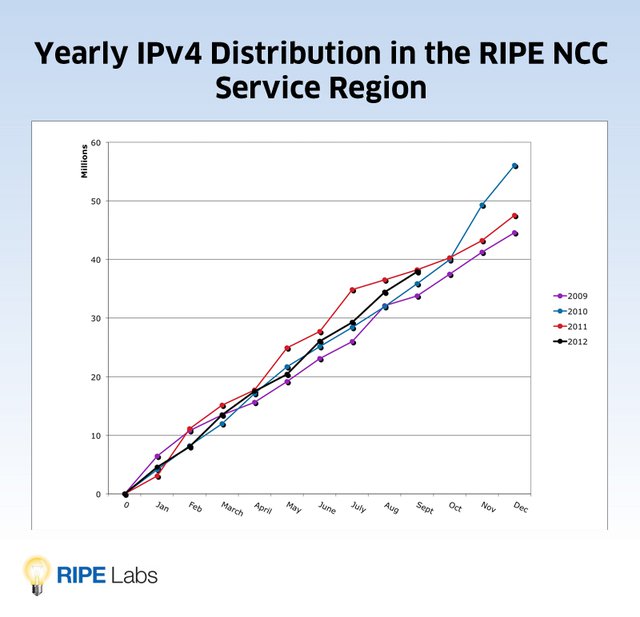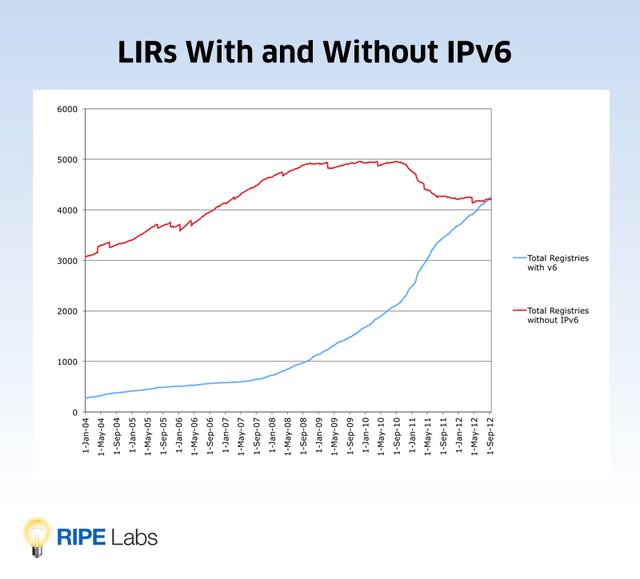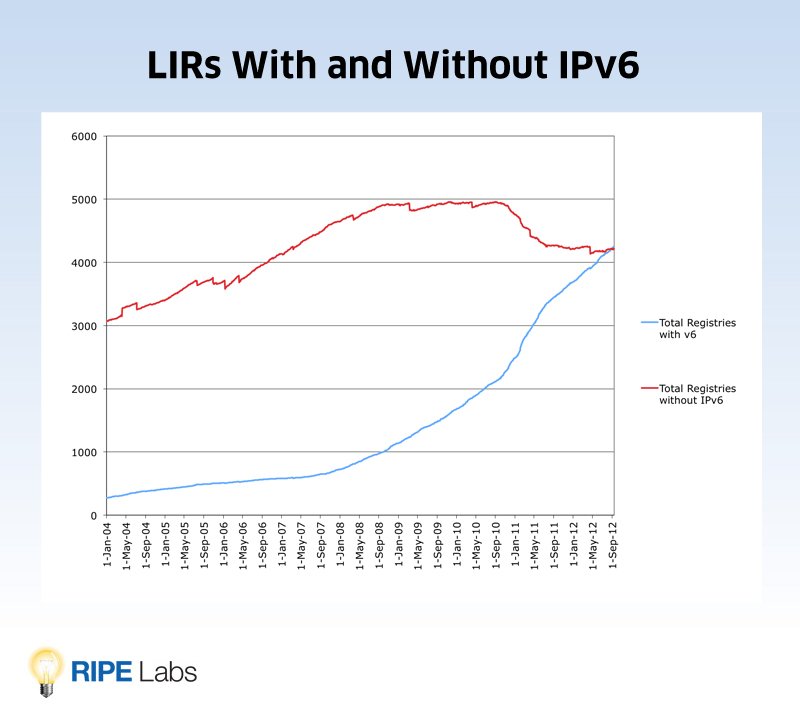Now we have reached the last /8 of IPv4 addresses, we have looked at the allocation and assignment rate again. At the same time we also monitored the growth in IPv6 allocations.
In an earlier article, IPv4 – Business As Usual , we pointed out that the RIPE NCC will reach the last /8 of IPv4 address space (16,777,216 addresses) sometime later this year. On Friday, 14 September 2012 we reached this important milestone; we allocated the last IPv4 addresses from the unallocated pool. From now on, the RIPE NCC can only distribute IPv6 addresses and a one-time /22 IPv4 allocation (1,024 IPv4 addresses) from the last /8 to those Local Internet Registries (LIRs) that meet the requirements (for more information, see Reaching the Last /8 .)
During the last few months we didn’t observe any major rush from organisations requesting the remaining IPv4 addresses (see the black line in the graph below). However, over the last few weeks, we saw an increase in requests and in the number of IPv4 allocations. The number of IPv4 addresses we handed out during the last two weeks equalled what we normally give out within one month. But overall, the chart below shows that reaching the last /8 of IPv4 address space is not coming as a surprise to the community, and that most people are well prepared for it. It’s good to see that the address space distribution policies set by the RIPE community worked well and that the allocation procedures followed by the RIPE NCC are ensuring that this milestone was reached in a fair and controlled manner.

Figure 1: Cumulative number of IPv4 addresses assigned or allocated yearly since 2009. Every year is depicted in a different colour. The dots on each curve indicate the number of addresses distributed at the end of each month.
At the same time, we are excited to see that now over 50% of the Local Internet Registries (LIRs) in the RIPE NCC service region have an IPv6 allocation. The image below shows the number of LIRs that have an IPv6 allocation (blue line) and those that don’t yet have IPv6 address space (red line).

This is an important development, but there is obviously still a long way to go until widespread IPv6 deployment. To learn more about IPv6, please see IPv6ActNow .





Comments 0
The comments section is closed for articles published more than a year ago. If you'd like to inform us of any issues, please contact us.